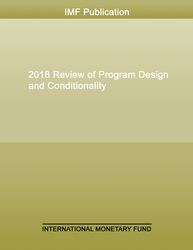
Issues in Restructuring of Sovereign Domestic Debt
This paper analyzes when and how to restructure sovereign domestic debt in unsustainable debt cases in a way that minimizes economic and financial disruptions.
READ MORE...
Volume/Issue:
Volume 2021
Issue 071
Publication date: December 2021
ISBN: 9781616358112
$5.00
Add to Cart by clicking price of the language and format you'd like to purchase
Available Languages and Formats
| English |
Prices in red indicate formats that are not yet available but are forthcoming.
Topics covered in this book
This title contains information about the following subjects.
Click on a subject if you would like to see other titles with the same subjects.
Exports and Imports , Money and Monetary Policy , Public Finance , Political Economy , domestic debt , sovereign debt restructuring , sovereign default , emerging market economies , developing economies , debt reduction strategy , Restructuring event , transparency policy , reduction episode , restructuring events , debt exchange , Debt restructuring , Domestic debt , Sovereign debt restructuring , Global
Also of interest
Summary
As emerging and developing economies accumulate more domestic sovereign debt, it is likely to play a larger role in the resolution of future sovereign debt crises. This paper analyzes when and how to restructure sovereign domestic debt in unsustainable debt cases while minimizing economic and financial disruptions. Key to determining whether or not domestic debt should be part of a sovereign restructuring is weighing the benefits of the lower debt burden against the fiscal and broader economic costs of achieving that debt relief. The fiscal costs may have to be incurred in the context of restructuring because of the need to maintain financial stability, to ensure the functioning of the central bank, or to replenish pension savings. A sovereign domestic debt restructuring should be designed to anticipate, minimize, and manage its impact on the domestic economy and financial system. Casting the net wide across claims can help boost participation in the restructuring by lowering the relief sought from each creditor group. A strategy that engages creditors constructively, and as transparently as possible, that relies on market-based incentives, and that presents the exchange as part of a consistent macroeconomic plan typically works best.



